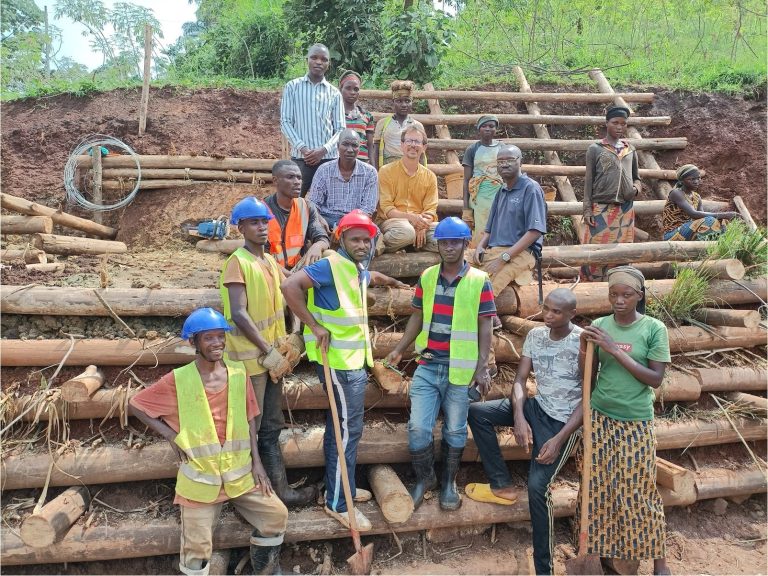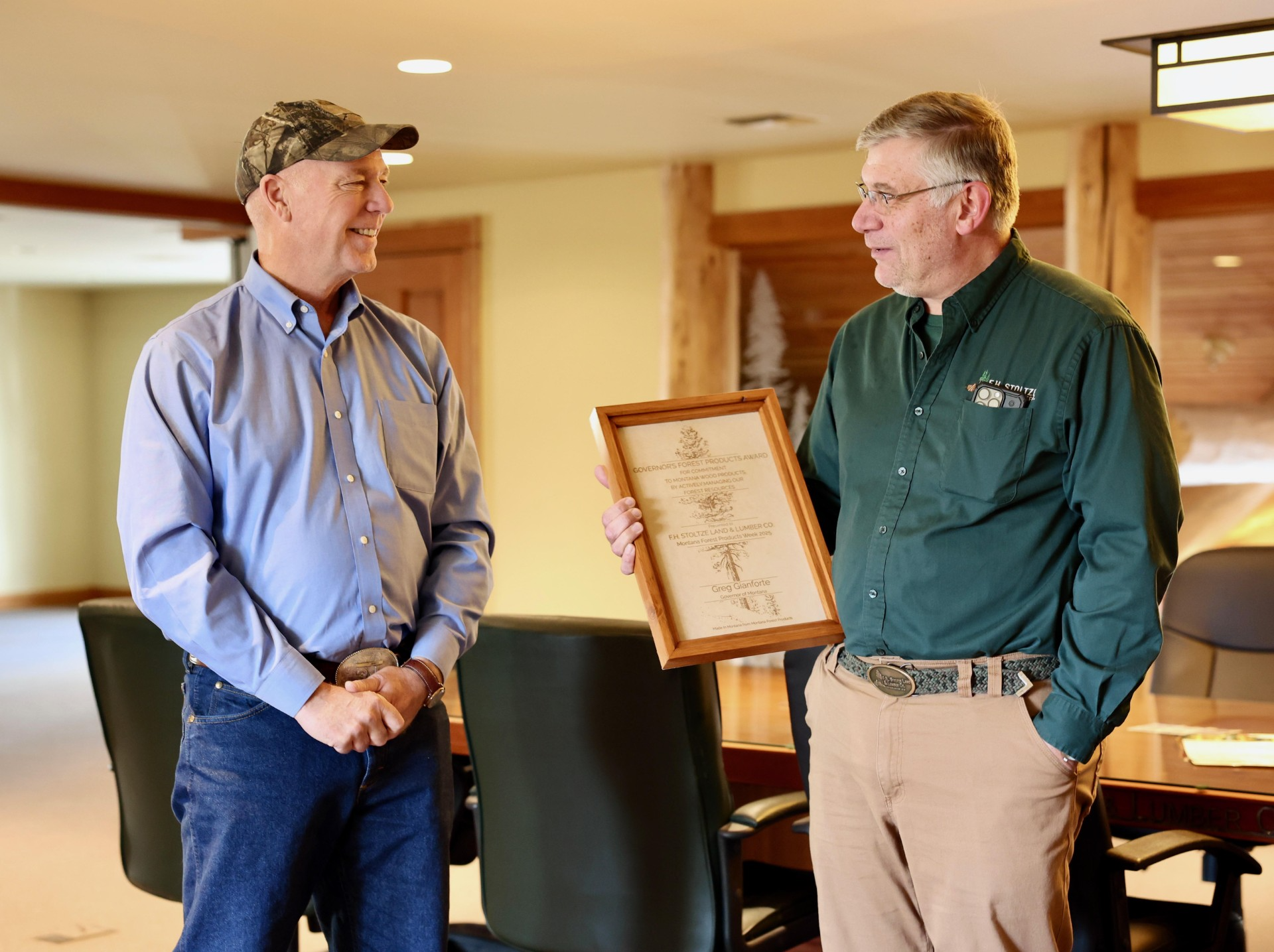Where Andes meet Amazon, a new ‘lifeline’ for wildlife – Conservation International

Report on the Establishment of the Palora-Pastaza Ecological Corridor in Ecuador
Introduction: Addressing Climate and Biodiversity Crises through Strategic Conservation
In response to the dual threats of global temperature rise and persistent deforestation, a significant conservation initiative has been launched in central Ecuador. These environmental pressures are fragmenting critical habitats, jeopardizing the survival of numerous species and impacting human communities. This report details the establishment of the Palora-Pastaza ecological corridor, a project that directly addresses several United Nations Sustainable Development Goals (SDGs), primarily SDG 13 (Climate Action) and SDG 15 (Life on Land).
Project Overview and Alignment with Sustainable Development Goals
The Palora-Pastaza Corridor Initiative
The Ecuadorian government, in a multi-stakeholder partnership, has officially announced the creation of the Palora-Pastaza corridor. This initiative represents a strategic effort to enhance ecological connectivity and build resilience against climate change.
- Scope: The corridor spans 316,000 hectares (781,000 acres), making it the largest of its kind in the Ecuadorian Amazon.
- Objective: To connect Sangay National Park in the Andes with Indigenous territories in the Amazon, creating safe passage for wildlife such as jaguars, tapirs, and monkeys to migrate to higher, more temperate elevations as their habitats shift.
- Function: The corridor bridges gaps between isolated protected areas, mitigating the “island” effect of traditional conservation parks and ensuring genetic diversity and species survival. This directly contributes to the targets of SDG 15 (Life on Land) by halting biodiversity loss and protecting threatened species.
A Multi-Stakeholder Framework for Global Goals (SDG 17)
The success of this project is founded on a robust collaborative framework, exemplifying SDG 17 (Partnerships for the Goals). The initiative is a joint effort between governmental and non-governmental entities.
- Governmental Bodies: The Ecuadorian government, two provincial governments, and six municipal governments.
- International Organizations: Conservation International and the World Wildlife Fund (WWF).
- Financial Partners: The Global Environment Facility (GEF).
- Local and Indigenous Communities: The Shuar, Achuar, and Kichwa peoples.
Empowerment of Indigenous Communities and Sustainable Livelihoods
Recognizing Indigenous Stewardship (SDG 10)
The corridor’s design and implementation are deeply rooted in the empowerment of local populations, a key tenet of SDG 10 (Reduced Inequalities). Indigenous communities are central partners, not merely stakeholders.
- Land Ownership: 84% of the land within the corridor is the ancestral territory of the Shuar, Achuar, and Kichwa communities.
- Effective Conservation: The project acknowledges the proven effectiveness of Indigenous peoples as stewards of the environment, citing research that shows consistently lower deforestation rates on Indigenous-managed lands.
- Collaborative Governance: Since 2023, Conservation International has worked with representatives from each community to co-plan and manage the corridor, ensuring its long-term protection and respecting traditional knowledge.
Fostering Sustainable Economic Opportunities (SDG 8)
The corridor is designed to integrate human activity and conservation, providing tangible benefits that support SDG 8 (Decent Work and Economic Growth). The project directly benefits over 2,000 local inhabitants by promoting a transition to sustainable economic models.
- Technical and Financial Support: Residents receive funding and technical assistance to adopt sustainable farming practices.
- Sustainable Livelihoods: The initiative helps develop livelihoods that are compatible with conservation objectives, allowing both people and wildlife to thrive.
Conclusion: A Replicable Model for Integrated Conservation
The Palora-Pastaza corridor serves as a comprehensive model for addressing complex environmental challenges. By integrating climate adaptation strategies, biodiversity protection, and socio-economic development, the project provides a powerful framework for achieving multiple Sustainable Development Goals. It demonstrates that by maximizing the potential of existing protected areas through connectivity and centering Indigenous partnerships, it is possible to protect vital ecosystems and the livelihoods of the people who depend on them. This approach is a critical strategy for Ecuador, a nation with limited land available for new, large-scale protected designations.
Analysis of Sustainable Development Goals (SDGs) in the Article
1. Which SDGs are addressed or connected to the issues highlighted in the article?
-
SDG 13: Climate Action
The article directly links the project to climate change, stating that “As global temperatures rise, wildlife around the world are on the move” and that the corridor is a response to “rising temperatures coupled with deforestation.” This positions the initiative as a climate adaptation strategy.
-
SDG 15: Life on Land
This is the central theme of the article. The entire initiative is focused on protecting terrestrial ecosystems and biodiversity. It discusses halting deforestation, protecting threatened species like “jaguars, tapirs and monkeys,” and conserving and restoring habitats by creating the “Palora-Pastaza corridor” to link “protected forests with Indigenous territories.”
-
SDG 17: Partnerships for the Goals
The article explicitly highlights a multi-stakeholder partnership as the foundation of the project. It names the collaborators: “the Ecuadorian government, with support from Conservation International, World Wildlife Fund and the Global Environment Facility,” as well as the crucial involvement of “three Indigenous communities — the Shuar, Achuar and Kichwa — who along with two provincial and six municipal governments elected to include their territories in the protected corridor.”
-
SDG 8: Decent Work and Economic Growth
The project includes a component for sustainable economic development for local populations. The article states the corridor “will directly benefit more than 2,000 people who live in the area by providing them with funding or technical assistance to shift to sustainable farming practices and livelihoods.”
-
SDG 11: Sustainable Cities and Communities
The article touches on this goal by focusing on the protection of cultural and natural heritage. The corridor protects the “ancestral lands” of Indigenous communities and involves “two provincial and six municipal governments” in a land-use planning initiative that integrates human settlements with nature conservation.
2. What specific targets under those SDGs can be identified based on the article’s content?
-
SDG 15: Life on Land
- Target 15.1: Ensure the conservation, restoration and sustainable use of terrestrial and inland freshwater ecosystems and their services, in particular forests. The creation of the 316,000-hectare corridor is a direct action towards this target.
- Target 15.2: Promote the implementation of sustainable management of all types of forests, halt deforestation, restore degraded forests. The corridor is designed to combat “persistent deforestation” and connect “remaining patches of healthy habitat.”
- Target 15.5: Take urgent and significant action to reduce the degradation of natural habitats, halt the loss of biodiversity and protect and prevent the extinction of threatened species. The project aims to provide safe paths for species like “jaguars, tapirs and monkeys.”
- Target 15.9: Integrate ecosystem and biodiversity values into national and local planning. The collaboration between the national government, provincial governments, municipal governments, and Indigenous communities to establish the corridor is a clear example of this integration.
-
SDG 13: Climate Action
- Target 13.1: Strengthen resilience and adaptive capacity to climate-related hazards and natural disasters. The corridor is presented as a solution to help wildlife adapt to “rising temperatures” by allowing them to “migrate to higher and more temperate elevations.”
-
SDG 17: Partnerships for the Goals
- Target 17.17: Encourage and promote effective public, public-private and civil society partnerships. The project is a partnership between the government of Ecuador (public), NGOs like Conservation International and WWF (civil society), and international bodies like the Global Environment Facility. It also represents a crucial partnership with Indigenous communities.
-
SDG 8: Decent Work and Economic Growth
- Target 8.4: Improve progressively, through 2030, global resource efficiency in consumption and production and endeavour to decouple economic growth from environmental degradation. The project supports this by providing “funding or technical assistance to shift to sustainable farming practices and livelihoods.”
-
SDG 11: Sustainable Cities and Communities
- Target 11.4: Strengthen efforts to protect and safeguard the world’s cultural and natural heritage. The corridor protects both the natural heritage (biodiversity, forests) and the cultural heritage represented by the “ancestral lands” of the Shuar, Achuar, and Kichwa communities.
3. Are there any indicators mentioned or implied in the article that can be used to measure progress towards the identified targets?
-
For SDG 15:
- Indicator 15.1.1 (Forest area as a proportion of total land area): The article provides a specific figure for the size of the conserved area: “Spanning 316,000 hectares (781,000 acres).” This is a direct measure of the land area under protection.
- Indicator 15.1.2 (Proportion of important sites for terrestrial biodiversity that are covered by protected areas): The creation of the corridor, which “links protected forests with Indigenous territories,” directly increases the proportion of protected land in a biodiverse region.
- Implied Indicator (Rate of deforestation): The project’s success can be measured by monitoring the rate of deforestation within and around the corridor, as it was established to counter “persistent deforestation.”
- Implied Indicator (Population trends of key species): Progress towards Target 15.5 can be measured by tracking the populations of the mentioned species: “jaguars, tapirs and monkeys.”
-
For SDG 8:
- Implied Indicator (Number of beneficiaries of sustainable livelihood programs): The article provides a quantifiable number, stating the project will “directly benefit more than 2,000 people” by helping them shift to sustainable practices.
-
For SDG 17:
- Implied Indicator (Number and type of partners in a multi-stakeholder initiative): The article lists the specific partners involved: one national government, two international NGOs, one global environmental fund, three Indigenous communities, two provincial governments, and six municipal governments.
4. Summary Table of SDGs, Targets, and Indicators
| SDGs | Targets | Indicators (Mentioned or Implied in the Article) |
|---|---|---|
| SDG 15: Life on Land |
15.1: Conserve and restore terrestrial ecosystems. 15.2: Halt deforestation and restore degraded forests. 15.5: Protect biodiversity and prevent extinction of threatened species. 15.9: Integrate biodiversity values into national and local planning. |
– Area of the conservation corridor: “316,000 hectares (781,000 acres).” – Protection of specific threatened species: “jaguars, tapirs and monkeys.” – Implied: Reduction in the rate of “persistent deforestation.” |
| SDG 13: Climate Action | 13.1: Strengthen resilience and adaptive capacity to climate-related hazards. | – Creation of a corridor to allow wildlife to “migrate to higher and more temperate elevations” in response to “rising temperatures.” |
| SDG 17: Partnerships for the Goals | 17.17: Encourage and promote effective public, public-private and civil society partnerships. | – A documented partnership between the Ecuadorian government, Conservation International, WWF, Global Environment Facility, and local/Indigenous communities. |
| SDG 8: Decent Work and Economic Growth | 8.4: Decouple economic growth from environmental degradation. | – “directly benefit more than 2,000 people” through “sustainable farming practices and livelihoods.” |
| SDG 11: Sustainable Cities and Communities | 11.4: Strengthen efforts to protect and safeguard the world’s cultural and natural heritage. | – Protection of “ancestral lands” belonging to three Indigenous communities. |
Source: conservation.org

What is Your Reaction?
 Like
0
Like
0
 Dislike
0
Dislike
0
 Love
0
Love
0
 Funny
0
Funny
0
 Angry
0
Angry
0
 Sad
0
Sad
0
 Wow
0
Wow
0
















































































